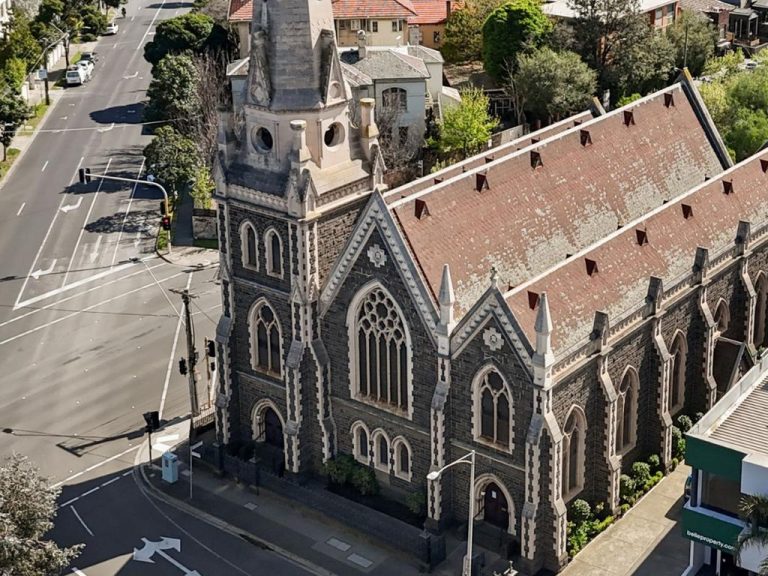City hotels hit again as business travel slows with Sydney, Melbourne worst affected

Accor’s Simon McGrath says the Gold Coast market is also feeling the pinch. Picture: Jerad Williams
Sydney hotel occupancies have dropped to 15 per cent, with owners and managers looking to either close entire properties or turn them over to residential lettings.
“We haven’t closed any hotels in the network, but some are working week to week,” said Simon McGrath, chief executive of Accor, Australia’s largest chain of 400-plus hotels.
Occupancy-wise, the worst performers throughout the Covid-19 pandemic are Sydney and Melbourne CBD hotels, with Mr McGrath saying these properties had not recovered since last year because of the paucity of business-related travel.
“CBD Sydney and CBD Melbourne hotels remain the hardest hit, because they are in lockdown and we didn’t see much recovery in those areas because all the business for the past 12 months has been going into leisure travel,” Mr McGrath said.
Canberra and the Gold Coast, which until recently had not been in lockdown, were also badly affected as their feeder markets of Sydney and Melbourne holiday-makers have dried up.
Research released on Friday reveals Sydney’s hotels posted occupancies of just 15.6 per cent in the week to August 1, the lowest occupancy all year. Data house STR said markets with longer restrictions had seen occupancy levels below 20 per cent.
STR regional manager Matthew Burke said Australia had been one of the highest-performing countries during the early portion of the year, but its hotel occupancy had been on a rapid decline amid the latest lockdowns.
“New and extended restrictions amid the latest outbreaks have undoubtedly affected performance in recent weeks,” Mr Burke said in a statement.
“Although winter is likely a precipitating factor for some of the decline, these new restrictions across state borders have meant that a lot of travel is simply not possible. We noted last month that forward-looking data around the country was trending downward, and that has been supported by the actualised figures.
“The extended lockdown in Sydney and most recently in Brisbane have led to airline capacity shrinking dramatically.
“Qantas, for instance, went from operating at 100 per cent domestic capacity in May to less than 40 per cent in July.”
For hotels, STR’s latest data shows Sydney, Melbourne and Brisbane with lower levels of occupancy on the books at the start of the month than compared with the same time last year. In markets that are open, a renewed push towards intrastate travel has begun, with tourism voucher campaigns launching in Tasmania and the Northern Territory, and others possible to help stimulate demand.
“For example, in Adelaide, Friday nights show the highest occupancy on the books with the legacy voucher campaign providing that base stimulatory demand,” Mr Burke said.
For the week ending August 1, Adelaide’s hotel occupancies were just 30 per cent, Melbourne was 21.2 per cent and Canberra was 21.2 per cent, even though it is not in lockdown.
“Like the [Sydney] northern beaches cluster in December and January, Canberra’s performance is closely tied to Sydney’s openness,” Mr Burke said. “Despite not having a case, Canberra is still feeling the performance impact.”
Mr McGrath said Canberra’s performance was catastrophic in terms of occupancy and rates. “Canberra is not a hot spot so it doesn’t get any government support, the employees of tourism in Canberra have no support,” he said. “All of Canberra’s major feeder markets are in lockdown including Brisbane, Sydney and Melbourne. The tourism industry in Canberra needs a whole lot of support.”
On the Gold Coast, Harry Triguboff said occupancy in his Meriton Serviced Apartment complexes was down to 30 per cent compared with Sydney, where he is seeing 15-20 per cent occupancies.
“When Queensland is open, occupancies are very good because people come here from across the border,” Mr Triguboff said. “If they want occupancies in hotels, they must open the borders.”
Mr McGrath said Melbourne and Sydney-siders typically frequented the Gold Coast in July and August. “One would hope from September onwards there is a lot of Brisbane and intrastate business, as well as Sydney and Melbourne visitors underpinning the Gold Coast,” he said.
Meanwhile, Darwin posted Australia’s highest occupancy for the week to August 1, with its hotels 65.4 per cent occupied, coming off highs of more than 82 per cent in late May.
Queensland (prior to lockdown) came in second during the week, at 61.8 per cent, followed by Perth and Brisbane at 48.1 per cent and 44.7 per cent, the STR figures reveal.







